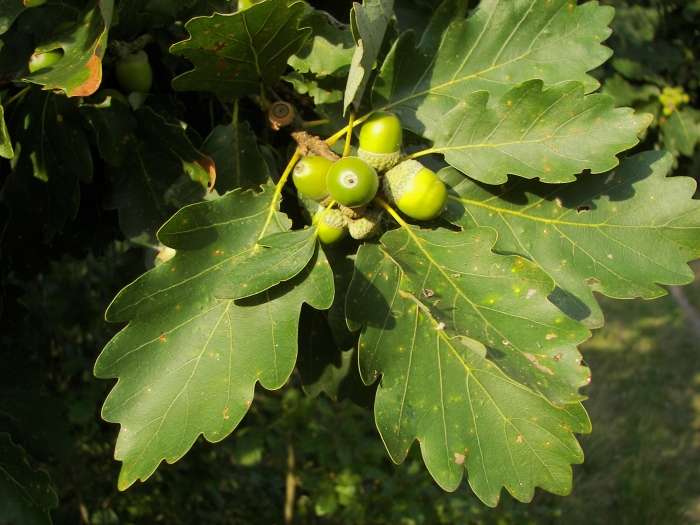Sessile Oak
(Quercus petraea)
Sessile Oak (Quercus petraea)
/
/

Nikanos
CC BY-SA 2.5




















































Estimated Native Range
Summary
The Sessile Oak is valued for its durable wood and ecological importance, providing habitat and food for numerous wildlife species. It is the national tree of Ireland, symbolizing strength and endurance. In cultivation, it is often used for reforestation, as a specimen tree in large landscapes, and for its attractive, lobed foliage. It requires full sun and can adapt to a range of soil conditions, preferring well-drained soils. While it is generally low-maintenance, it can be susceptible to powdery mildew and oak wilt. The tree’s deep root system can make transplantation difficult, but it is not known for aggressive roots that cause damage. It is not typically invasive when grown outside its native range, but care should be taken to ensure it does not outcompete local species.CC BY-SA 4.0
Plant Description
- Plant Type: Tree
- Height: 100-120 feet
- Width: 30-45 feet
- Growth Rate: Slow
- Flower Color: N/A
- Flowering Season: Spring
- Leaf Retention: Deciduous
Growth Requirements
- Sun: Full Sun, Part Shade
- Water: Low
- Drainage: Slow, Medium
Common Uses
Bee Garden, Bird Garden, Butterfly Garden, Deer Resistant, Drought Tolerant, Edible*Disclaimer: Easyscape's listed plant edibility is for informational use. Always verify the safety and proper identification of any plant before consumption., Low Maintenance, Rabbit Resistant, Street Planting
Natural Habitat
Native to deciduous woodlands, forest edges, and grasslands across Europe and the Caucasus
Other Names
Common Names: Durmast Oak, Irish Oak, Cornish Oak, Vinter-Eg, Trauben-Eiche, Traubeneiche, Chêne Rouvre, Vintereik, Wintereik, Bergek
Scientific Names: , Quercus petraea, Quercus sessilis, Quercus aesculus, Quercus robur var. petraea, Quercus mespilifolia, Quercus hypoleuca, Quercus moderata, Quercus adriatica, Quercus anglica
GBIF Accepted Name: Quercus petraea (Matt.) Liebl.